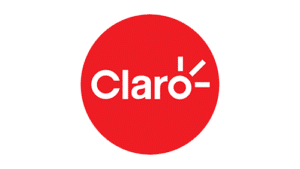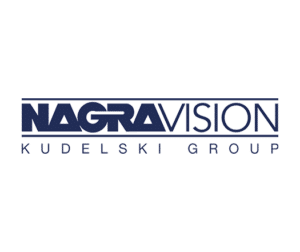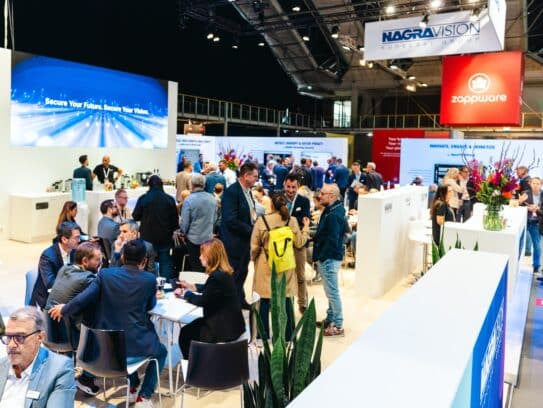In our latest blog Tim Pearson explores the role of AI in the media and entertainment industry, how it could be used in movie production and if this provides new rich pickings for pirates.
Summer evenings in London are rarely without some form of red carpet event that draws both the crowds and the press – such as the recent premiere of Oppenheimer. The difference here is that after all the glitz and glamour of their red carpet arrival, the cast promptly exited, and as movie director Christopher Nolan put it, ‘they’ve gone off to write their picket signs’. In the first strike of both writers and actors in nearly 60 years, one of their demands caught my eye – protection against an actor’s AI-generated digital likeness.
That got me thinking.
AI in the Media & Entertainment Industry
The M&E industry has been using AI in various forms for several years. Largely focused on data interpretation that detects anomalies and patterns around everything from security analytics to customer retention, its use is well documented. In the last year, however, its use and application have left the labs to become more mainstream. One area in particular, generative AI, has caused a tempest of debate across the industry. Spearheaded by today’s ‘go to’ engines for tricky questions, such as ChatGPT and AI content creators such as Midjourney, broader tools are also being used to create content that is realistic and easily blended into existing live-captured video.
At a recent NAGRA customer event, strategic partner AWS showed us how some of this technology is being used across the M&E industry – from sports telematics to creating new inserts for content production. Aside from likeness protection demanded by the striking actors, what about the wider security aspects and how could such technology be used for illicit gain?
Protecting the Protected
In a world where computer-generated moviemaking doesn’t involve writers, crew, or talent, will today’s structured production processes continue? Key to that production process is the protection of IP against illicit distribution. NAGRA is an industry leader in this charge by advocating solutions such as NexGuard Forensic Watermarking applied from the moment content leaves the camera to the point it is watched on a consumer’s device. Along the distribution chain, further tools from the NAGRA Active Streaming Protection toolset are used to protect valuable content investments. This includes illicit activities such as pirate re-distribution, extended access through credential sharing or addressing broader cyber threats. Incorporated into production and distribution workflows, security is a firm fixture meaning it is protecting both studio revenues and the identities and talents of those involved.
But how would this work in a pure generative AI landscape? For now, there is clearly a blend of both live and AI content working together as it passes through the existing secure workflows and processes. But with a pure AI landscape, where established processes, regulation and approaches are either in their infancy or non-existent, innovation can spawn both new content genres and new content production approaches – and arguably quicker than their more traditional cousins.
But is that day already here? I recently came across an article on LinkedIn that discussed a new Netflix show where contestants guess whether their partners’ actions are real or fake based on both live and deepfake content they review in the ‘chair of truth’. Equally, Marvel Studios’ new “Secret Invasion” TV series that has recently launched on Disney+ includes opening credits created with AI. Perhaps innocuous but creatives have reacted strongly about generative AI’s role. In particular, the impact it could have on artists’ careers going forward.
Evidently, this topic is generating much discussion across industry groups, regulators and vendors.
Generative AI & Piracy
Teams across NAGRA and the wider Kudelski Group have been hot-housing technologies that can identify bogus media or unauthorized representation of individuals’ likenesses created through AI-generated content. The aim being to ensure our solutions protect our customers’ interests. In the same way conventional content and service piracy is outwitted by developments in technology, a new era is dawning where piracy is about both stealing content and creating content that to the unaware, is a ‘genuine fake’. The ramifications of this are vast. With consumers already showing a voracious appetite for online content across both streaming services and social media, production timelines will come under pressure, particularly at a time of industrial unrest. This can open the door to new generative AI content and/or content formats as seen in the Netflix example above.
However, existing technologies can help address some of these challenges. Those creating ‘human-intelligence’ generated content use a variety of tools to identify whether AI-generated work has stolen their content – which can include likeness and speech/ tone. Some of these tools and techniques are the same as those used to track conventional content piracy and include watermarking both the video and/or audio so the source can be authenticated evidentially if required. In addition, investigative techniques are also used to identify entities posting or selling illicit AI-generated content.
Whether generative AI will form the next content revolution and change established industry practices and business models remains to be seen. If we look at adoption of technology over the years, it requires new muscle memory – much like we have learnt to deal with email and phone scams. However, as Bill Gates says in his recent blog, a deepfake video or voicemail of a family member allegedly kidnapped and demanding a ransom will have considerably more emotional impact than an email. Yet he and others adopt a positive yet cautious tone. As Paul Cramer from Veritone recently commented, “Gen AI won’t replace humans, but it will replace the humans who are not using AI.”
Navigate the Disruption. Secure Your Future
NAGRA has been securing content in all its forms for over 30 years. Our technologies extend across both content distribution and content production. As consumers start to interact and pay for a wider selection of content with their eyeballs (FAST, AdTech, loyalty rewards etc.) rather than their wallets, new security approaches, beyond just content security are required. To secure your future, why not get in touch with one of our experts today for a no-obligation discussion? We’d love to continue the conversation and tell you more about our market-leading NexGuard forensic watermarking for production and post-production, our wider OTT service protection solution, Active Streaming Protection or our cybersecurity solutions.























